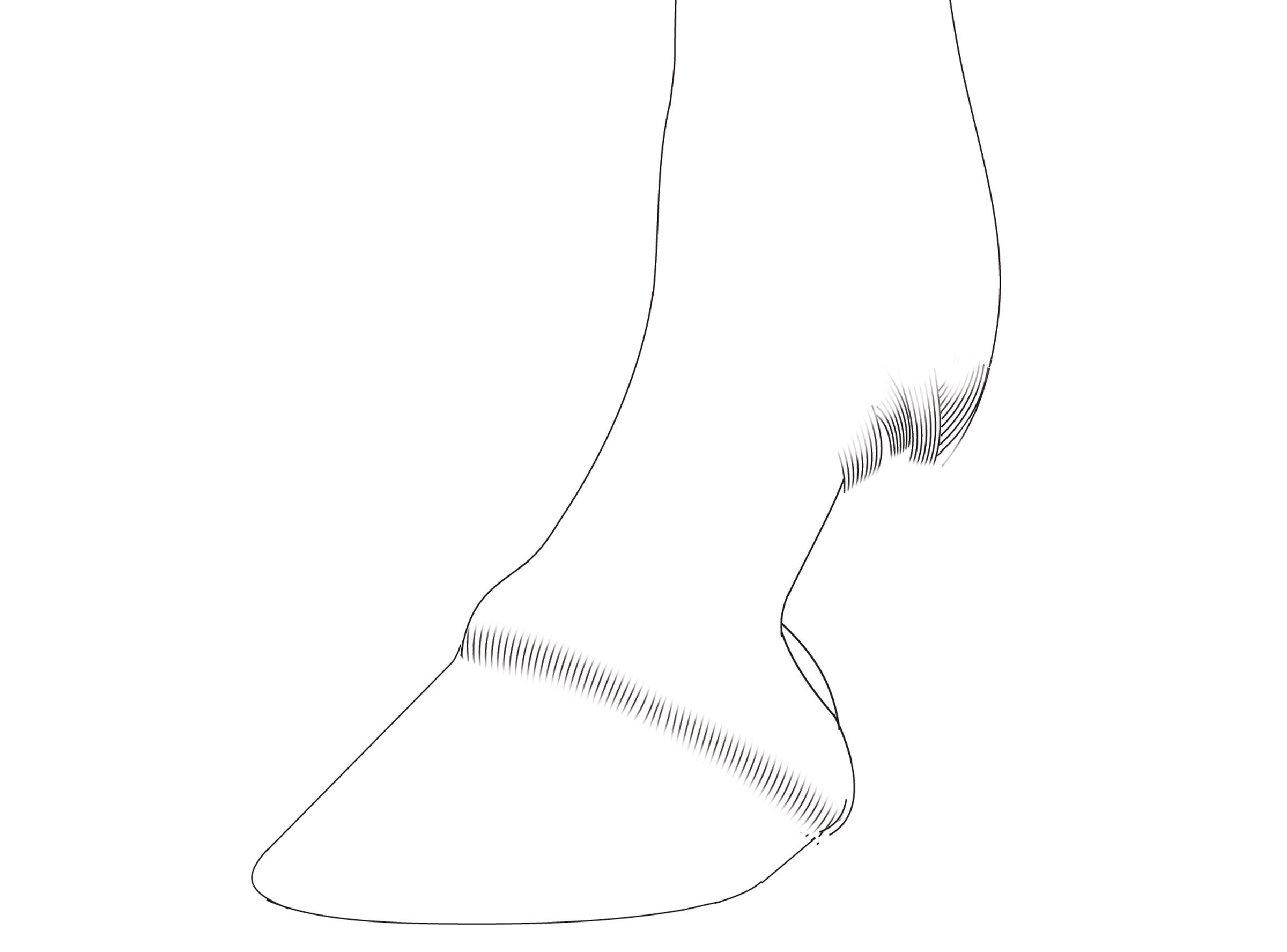
A more sloping hoof angle develops when a horse is trimmed or grows its foot out with long toes and short or low heels. This is referred to as long toe-low heel (LTLH) and results in a broken-back hoof-pastern axis. Studies have shown that a long toe-low heel foot configuration alters the forces within the hoof, with 75% of the weight taken by the heels on landing. This is in comparison to 61% force loading of the heels in a normal hoof configuration. Heel soreness is not uncommon in a horse with long toe-low heel feet.
While stride at the trot is not significantly different between horses with a normal hoof angle compared to an long toe-low heel hoof configuration, the long-toed hoof tends to increase its frequency of toe-first contact with the ground and that can lead to tripping and stumbling.
Normally, the heel contacts the ground before the toe so the coffin bone contacts the ground in a flat position and the heels sink into the ground for increased traction and push-off.
A long toe-low heel hoof configuration moves ground contact of the hoof forward beneath the coffin bone rather than toward the rear beneath the collateral cartilages, frog and digital cushion. This results in less energy dissipation from the extensive blood plexus within the digital cushion, so more concussion is concentrated within the hoof and limb.
Over time, hoof tubules in a long toe-low heel hoof compress and lose their shock-absorption capacity. And, longer toes place additional strain on the dorsal hoof wall with the potential to develop hoof pathology.
In addition, breakover (the time between heel off to toe off) is more prolonged with a long toe-low heel hoof, and this increases tension on tendons and ligaments within the hoof by as much as 25%, particularly of the navicular structures. The delay in foot movement might lead to a tendency to forge, i.e., a hind limb strikes a front limb. More muscular effort is required to lift each leg with a long toe-low heel hoof configuration, potentially leading to a faster onset of fatigue.


